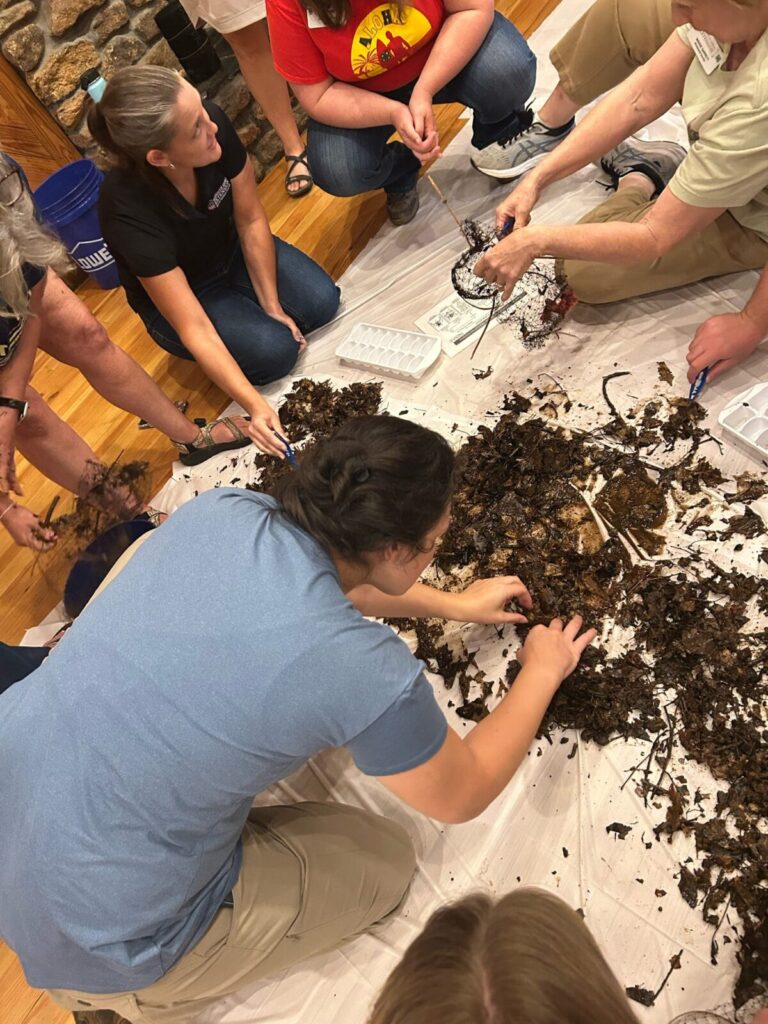
Heather Haines, 4-H Agent, UGA Extension Forsyth County
The weather is cooling off, and many of us have outdoor activities on our minds. Fall is a beautiful time of year for exploring our local parks, hiking trails, and visiting community green spaces. However, for some people, enjoying the outdoors is not as simple as lacing up their favorite pair of sneakers and heading outside. That’s why the local Extension faculty and staff have been working hard at adapting traditional environmental activities so everyone, regardless of ability, can connect with nature.
The Georgia 4-H Environmental Education (EE) Program began in 1979 at Rock Eagle 4-H Center in Eatonton under the leadership of Diane Davies. Davies served as a University of Georgia Cooperative Extension 4-H specialist. When she started, the program had a $300 budget, a six-month timeframe and was fueled by her determination to make the program work. Her goal was to provide hands-on outdoor learning experiences, using nature as a living classroom to teach children about science, local ecosystems, and natural history. Over time, the program expanded to other 4-H centers, and today many county offices have brought Environmental Education into their youth and adult programs.
As these programs have continued to grow, so has the need to ensure that they are inclusive. Research on civic ecology education reminds us that environmental education is more than just teaching youth and adult learners scientific facts. It is about creating a community’s opportunity for stewardship, community building, and a personal connection to a location. Activities like gardening, restoring green spaces, and studying local wildlife can be adapted so learners of all ages and abilities can have meaningful ways to participate.

These adaptations can take many forms. Raised gardening beds and smooth pathways are an easy way to make a community garden accessible for community members who are wheelchair users. Tactile materials and audio descriptions help learners who are blind or have low vision. Visual guides and smaller group activities support learners who benefit from a calmer environment. Each of these adjustments ensures that the message of environmental education is clear: nature belongs to everyone.
“By making small adjustments, we can give every student the chance to feel the joy of discovery and understand the importance of caring for our environment,” says Heather Haines, the Forsyth County 4-H Agent. “For example, my team has worked hard to ensure that people of all abilities and comfort levels can experience a hands-on stream ecology class”. The local Extension staff constructs leaf packages that are placed in local ponds and streams. When left for several days, the packages collect aquatic insects and other small creatures that help indicate the health of a body of water. This practice gives youth and adults the opportunity to study water quality and biodiversity up close, without requiring participants to crawl down a bank.
Beyond accessibility, inclusive programs benefit the entire community. When students see their peers of all abilities participating side by side, it fosters empathy and teamwork. Stewardship projects strengthen community ties, build confidence, and encourage civic engagement. Environmental education becomes more than outdoor science. It becomes a tool for creating resilient communities where everyone has a place.
From trails to classrooms, the mission remains the same as it was in 1979: to use nature as a living classroom. Today, the challenge and the opportunity is to ensure that classroom is open to all.